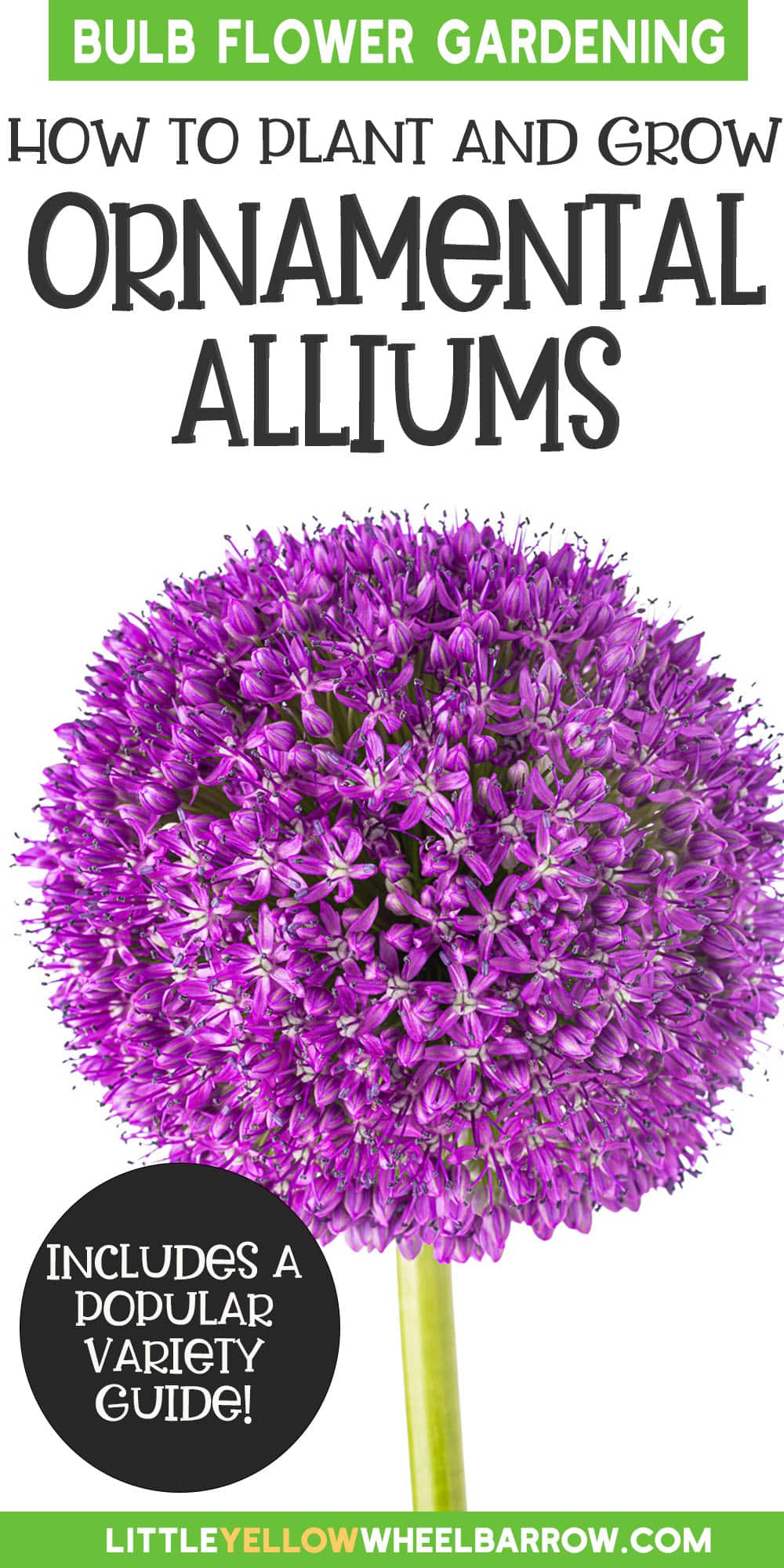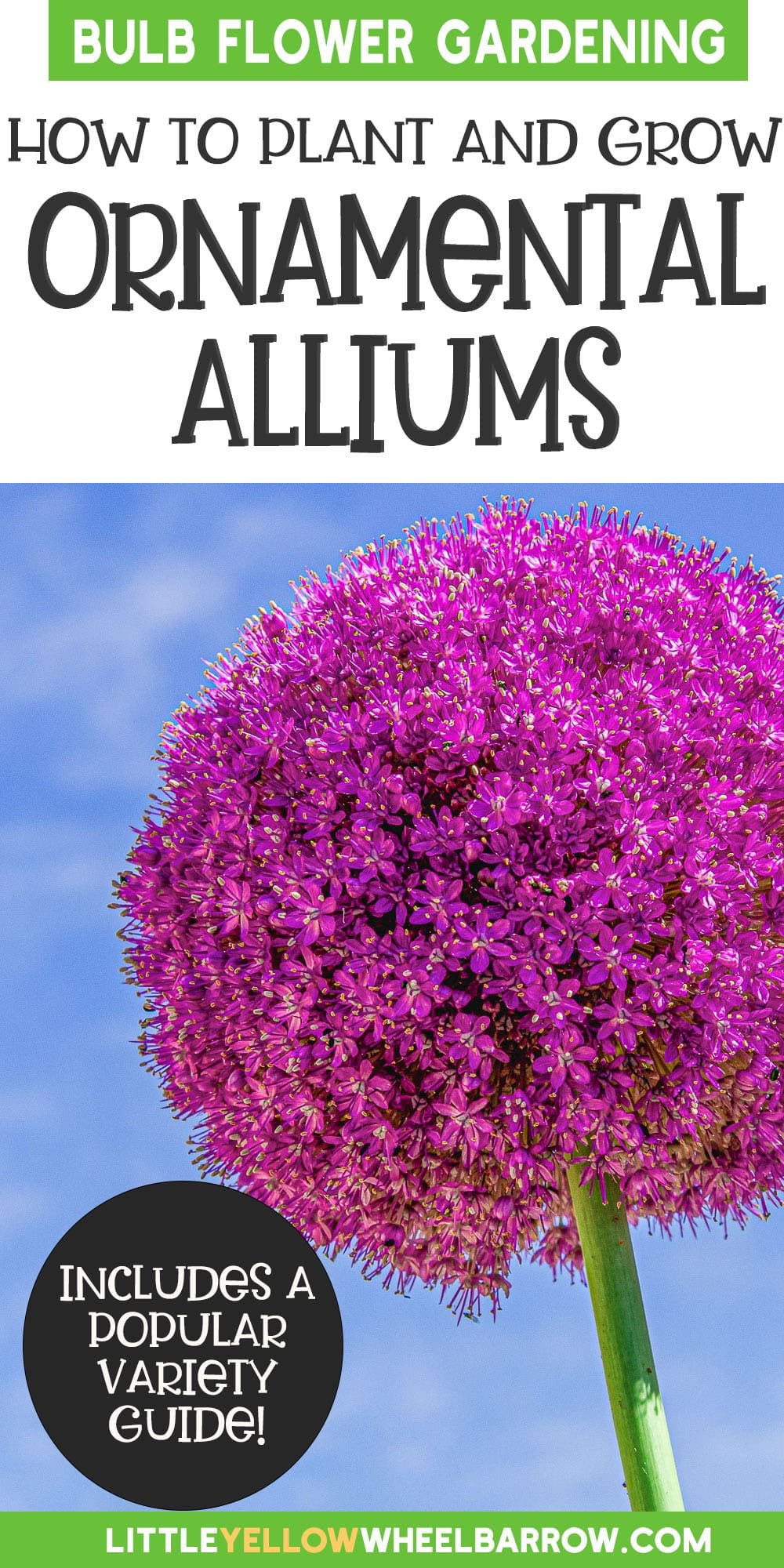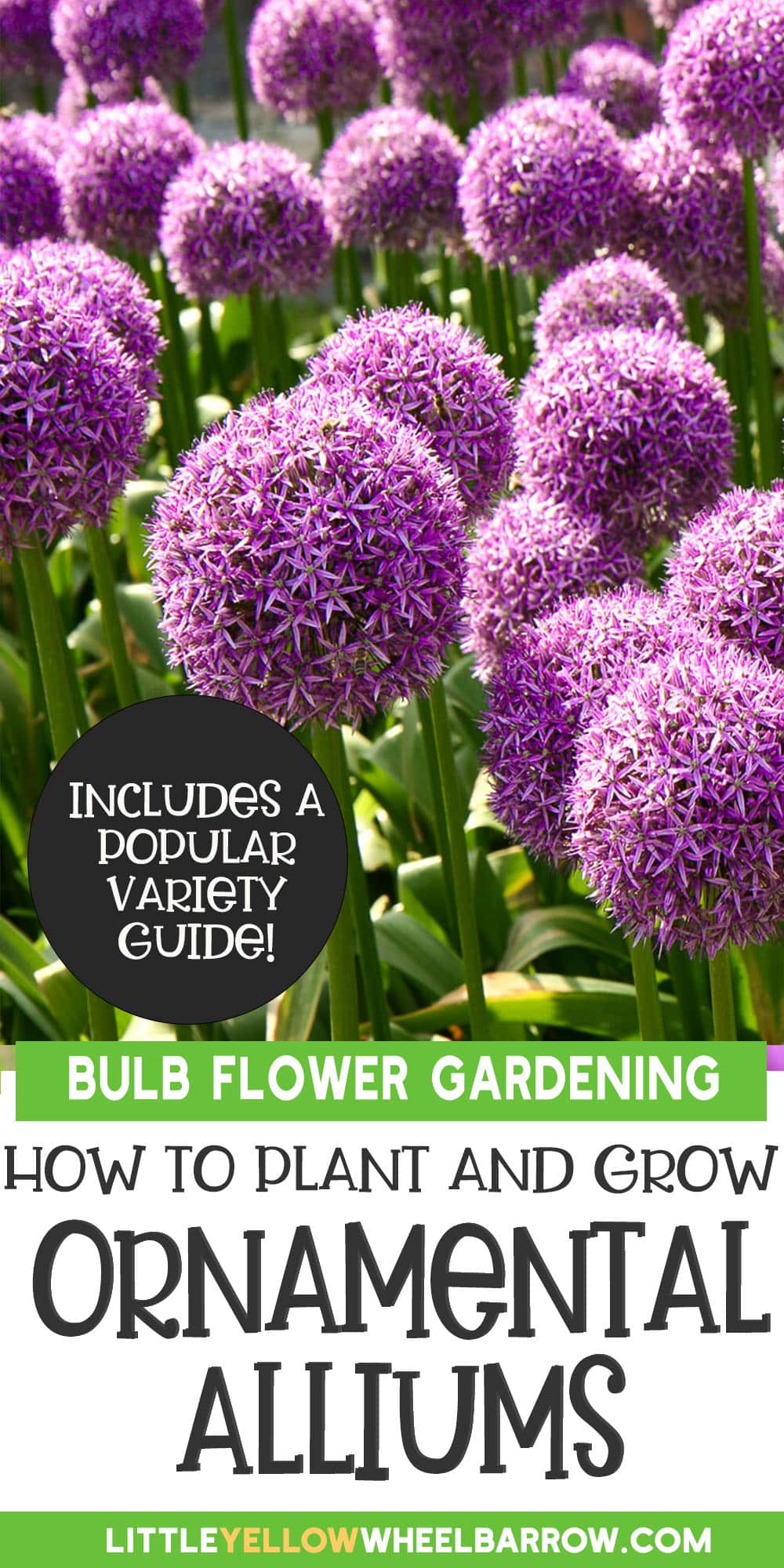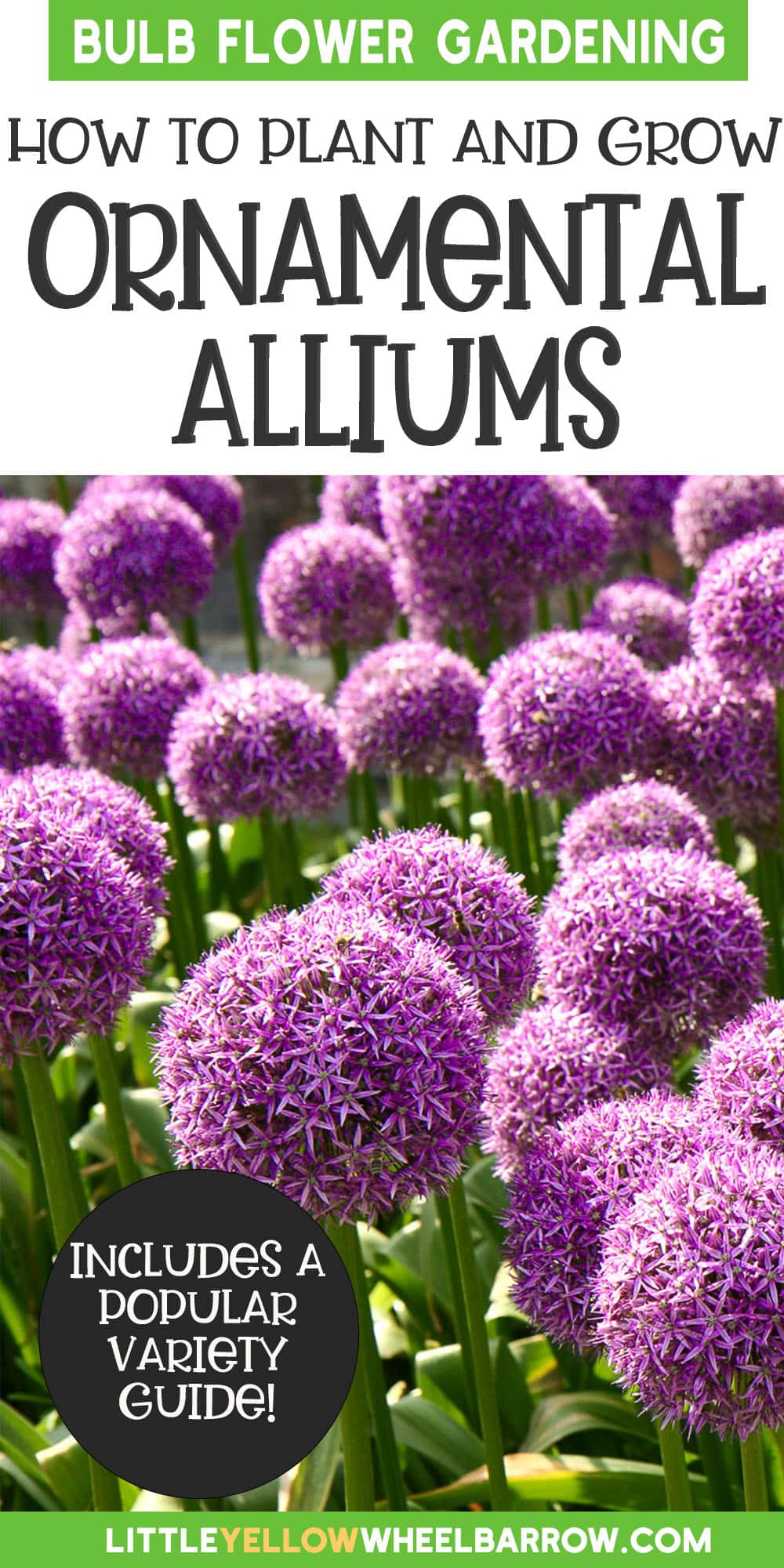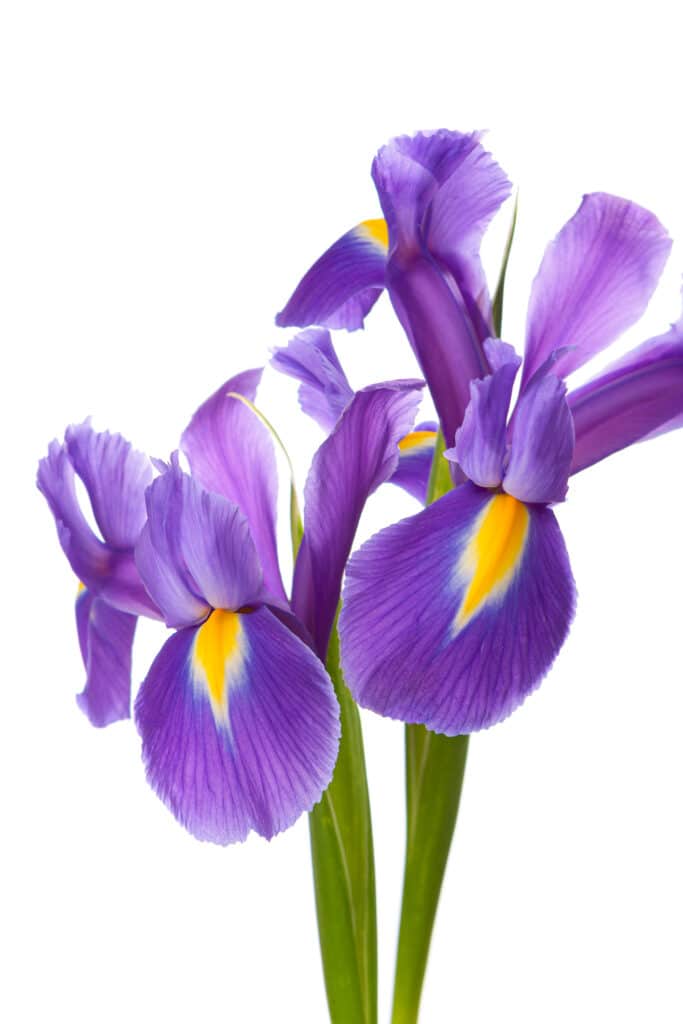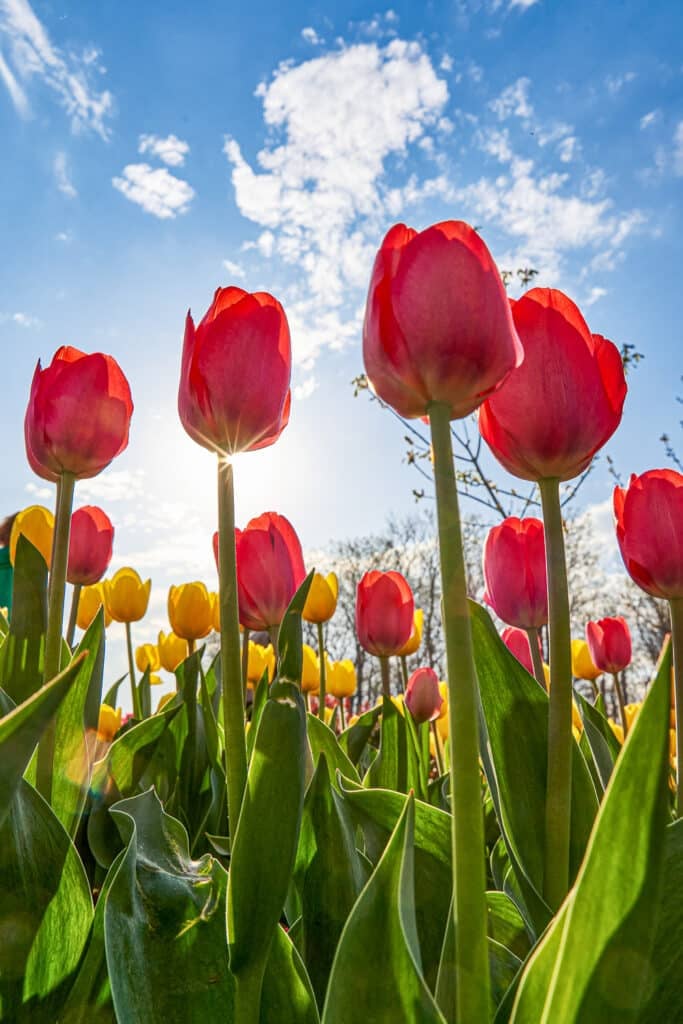How to Plant and Care For Ornamental Alliums
There is no better word to describe ornamental alliums in full bloom than enchanting. Their round pom-pom-shaped flowers in pallets of violets, purples, pinks, and whites can transform outdoor spaces into whimsical landscapes that resemble a Dr. Seuss illustration. And maybe perhaps it’s the child-like feel of the flowers that brings an enchanting, surreal feeling to any garden.
In our article below, we will take you through the benefits of planting allium bulbs in your garden (yes, so many benefits!), the best practices for planting bulbs, recommendations for some of the more popular varieties, and ways you can care for your flowers to keep them coming back for years to come.

All About Ornamental Alliums
Ornamental alliums, often called “ornamental onions,” are a diverse and eye-catching group of flowering plants belonging to the genus Allium, including culinary onions, garlic, and chives. These ornamental varieties are grown primarily for their attractive, globe-shaped flower heads.

Here are some key characteristics and details about ornamental alliums:
Appearance:
Alliums produce spherical flower heads varying from a few inches to over a foot in diameter, depending on the species and variety.
The flowers typically comprise numerous small, star-shaped blooms, creating a captivating and unique loli-pop appearance.
Colors vary widely among different species and cultivars, including purple, blue, white, pink, and even yellow flowers. Some alliums even have multicolored blooms.
Foliage:
Allium flowers bloom on long, slender stems and strappy leaves that arise from the base of the plant.
The foliage can be green or blue-green and an attractive backdrop for the showy flower heads.
Growth Habit:
Ornamental alliums vary in height, with some species growing as low as a few inches and others reaching up to several feet tall.
They have an upright, clumping growth habit, and their flower stalks rise above the foliage.
Bloom Time
Different species and varieties of ornamental alliums bloom from early spring to early summer, depending on their specific requirements and location. Some alliums can provide early summer blooms, so you can stagger other alliums to have months-long colors.
Sunlight and Soil Requirements
Ornamental alliums generally thrive in full sun to partial shade. They prefer well-drained soil and are relatively low-maintenance plants.
These plants are known for their adaptability to different soil types, but they perform best in soil that is not excessively wet.
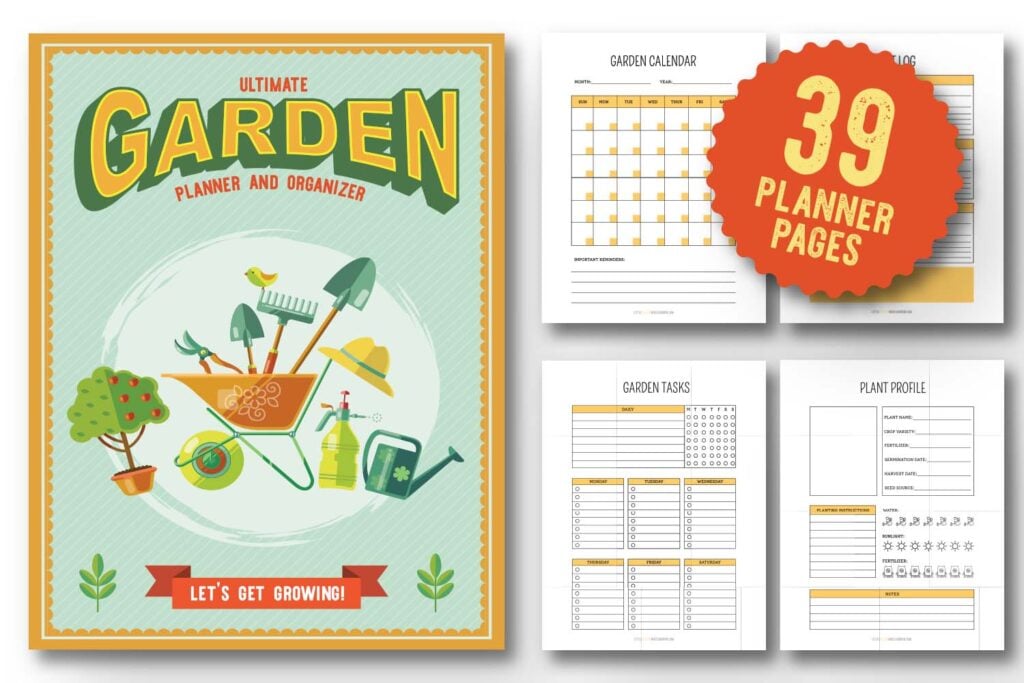
The Benefits of Allium Flowers: Why Plant Allium Bulbs?
Attracting Pollinators to Your Garden
Allium flowers are stunning and serve an essential purpose in your garden by attracting pollinators like bees and butterflies. These beautiful blooms act as magnets, drawing these beneficial insects to your outdoor space. As they flit from flower to flower, gathering nectar and pollen, they inadvertently aid in pollination, ensuring the reproduction of other plants in your garden.
Imagine a vibrant tapestry of colors as bees buzz around your allium flowers, their wings moving with a gentle hum. Butterflies gracefully flutter from bloom to bloom, their delicate presence adding an ethereal touch to your garden. By planting allium bulbs, you create a haven for these essential creatures while enhancing the overall beauty of your outdoor oasis.
- Learn More: Alliums are just one of many flowers and herbs you can add to your gardens to attract pollinators like bees and butterflies. See our guide on the best plants to build a reliable pollinator garden.

Long-Lasting Blooms for Seasonal Color
One of the remarkable features of the allium genus of flowers is their long blooming period. Unlike some flowers that burst into color briefly before fading away, alliums provide extended enjoyment throughout the season.
These flowers can grace your garden beds for weeks or months with proper care and maintenance.
Deer-Resistant Beauties
Gardening enthusiasts often face challenges with pests. However, one advantage of planting allium bulbs is that these flowers are known for being deer-resistant. If you live in an area where deer frequently roam, you can rest easy knowing that your alliums are less likely to become a tasty snack for these graceful but hungry creatures.
Incorporating allium flowers into your landscape creates a natural deterrent that dissuades these animals from feasting on your hard work. With their pungent aroma and slightly bitter taste, alliums act as guardians of your garden, ensuring it remains intact and flourishing.
- Learn More: Are deer a challenge in your garden? They sure are in ours! We’ve compiled a list of all the best deer-resistant perennials to help you plan your best spring and summer gardens.

Versatility as Cut Flowers
Allium flowers enhance the beauty of your outdoor space and can also be enjoyed indoors as cut flowers. Their unique shape and vibrant colors make them popular for floral arrangements.
Whether creating a centerpiece for a special occasion or simply brightening up your living room, allium blooms add an exciting and unexpected element to any bouquet.
- Learn More: Cut flowers are an excellent addition to any garden. If you are considering adding a cut garden, check out our guide on the best cut flowers to grow for beginners.
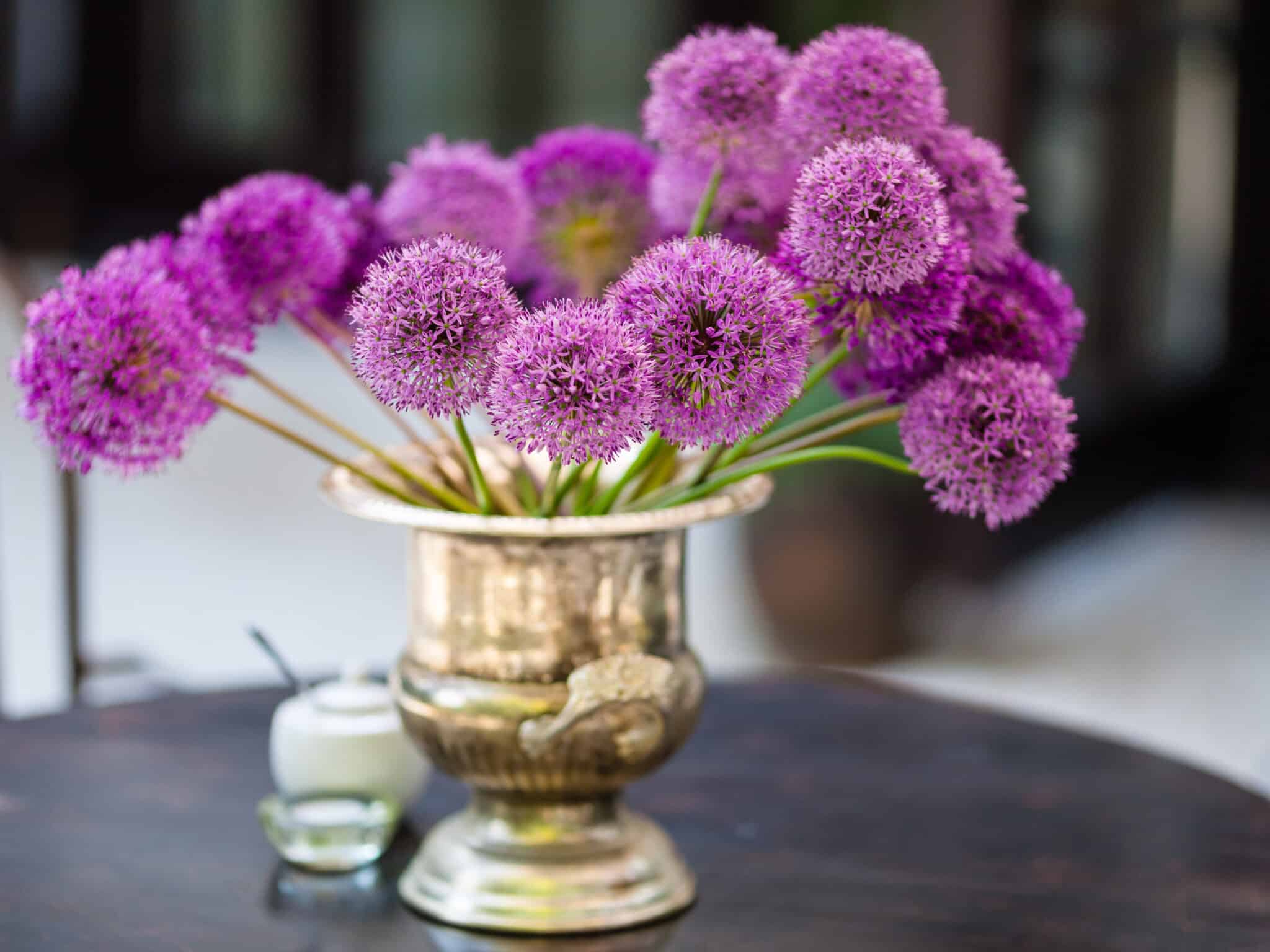
Planting and Growing Tips for Allium Bulbs
Here are our best tips for growing allium flowers:
Choosing the Perfect Spot to Plant Alliums
Choosing the right location is crucial for their growth and blooming success. These stunning flowers thrive in sunny areas, so select a spot that receives at least six hours of direct sunlight each day.
Where To Plant Ornamental Alliums
Ornamental alliums are often used in mixed borders, rock gardens, and perennial beds to add vertical interest, color, and whimsy.
Allium bulbs prefer well-draining soil to prevent waterlogging and root rot. If your garden has heavy clay or compacted soil, consider amending it with organic matter such as compost or peat moss to improve drainage before planting.

Properly Planting Allium Bulbs
Planting allium bulbs is a straightforward process that can yield beautiful results. Once you have selected the ideal location, follow these steps to ensure successful growth:

Make Planting 100’s of Bulbs easier on your back!
Simplify the process of planting bulbs by using a bulb planter. It ensures precise planting depth and speeds up planting considerably, saving unnecessary time on your knees. Trust me, your knees and back will thank me!
Step 1. Prepare the Soil:
Loosen the soil using a garden fork or tiller to create a loose and crumbly texture before planting. This will facilitate root penetration and allow for better nutrient absorption.
Step 2. Choose the Right Depth:
Dig a hole two to three times deeper than the bulb’s diameter. For example, if your allium bulb measures 2 inches in diameter, dig a 4-6 inches deep hole.
Step 3 Position the bulbs:
Place the bulb in the hole with its pointed end facing upwards. This orientation ensures proper growth and emergence of foliage and flowers.
Step 4. Cover The Bulbs Gently with Soil:
Fill the hole with soil while carefully not damaging or dislodging the bulb. Lightly pat down the soil around it for stability.
Step 5: Provide Adequate Water:
Give your newly placed Allium bulbs a thorough watering session after planting. This initial watering helps settle them into their new environment and encourages root establishment.

Watering Considerations for Allium Bulbs
While water is essential for plant growth, overwatering can harm many alliums and bulbs. Once the initial watering is done, it’s crucial to balance providing enough moisture and avoiding excessive dampness. Alliums prefer slightly drier conditions, so allow the soil to dry out between waterings. This will prevent issues such as root rot and fungal diseases.
To determine if your allium bulbs need watering, check the soil moisture level by inserting your finger about an inch into the ground. If it feels dry at that depth, it’s time to water. Remember to aim for deep rather than frequent shallow watering to encourage more healthy root growth.
Promoting Healthy Growth with Balanced Fertilization
Allium bulbs benefit from regular fertilization throughout the growing season to ensure vigorous growth and abundant blooms. A balanced fertilizer with equal amounts of nitrogen (N), phosphorus (P), and potassium (K) provides essential nutrients for optimal development.
Apply the fertilizer according to package instructions, typically in late winter or early spring before new growth emerges. Avoid over-fertilizing, as this can lead to excessive leafy growth at the expense of flower production. Always water thoroughly after applying fertilizer to help nutrients reach the plant’s roots.
Encouraging Flower Production through Deadheading
Alliums are known for their striking globe-shaped flowers that add drama and elegance to any garden setting. To maximize flower production and extend their blooming period, deadheading is essential.
The Right gardening gloves make the difference!

We love these thorn-proof & puncture-resistant gardening gloves! After trying countless different gloves over the years from expensive to cheap, these are the gloves we buy.
Variety Showcase: Exploring Popular Types of Allium Bulbs
Ornamental alliums are famous spring and summer blooming bulbs known for their unique spherical flower heads. They come in various sizes and colors, adding visual interest to gardens and landscapes. Here’s a list of popular ornamental alliums with descriptions, including their approximate bloom times:
Giant Allium (Allium giganteum)

Giant Alliums are famous for their large, globe-shaped flower heads reaching up to 6 inches in diameter. They have sturdy stems and typically sport purple blooms.
Bloom Time: Late spring (May to June).
Purple Sensation Allium (Allium ‘Purple Sensation’)

Purple Sensation features deep purple, starburst-like flower heads slightly smaller than A. giganteum.
Bloom Time: Late spring (May).
Globemaster Allium (Allium ‘Globemaster’)
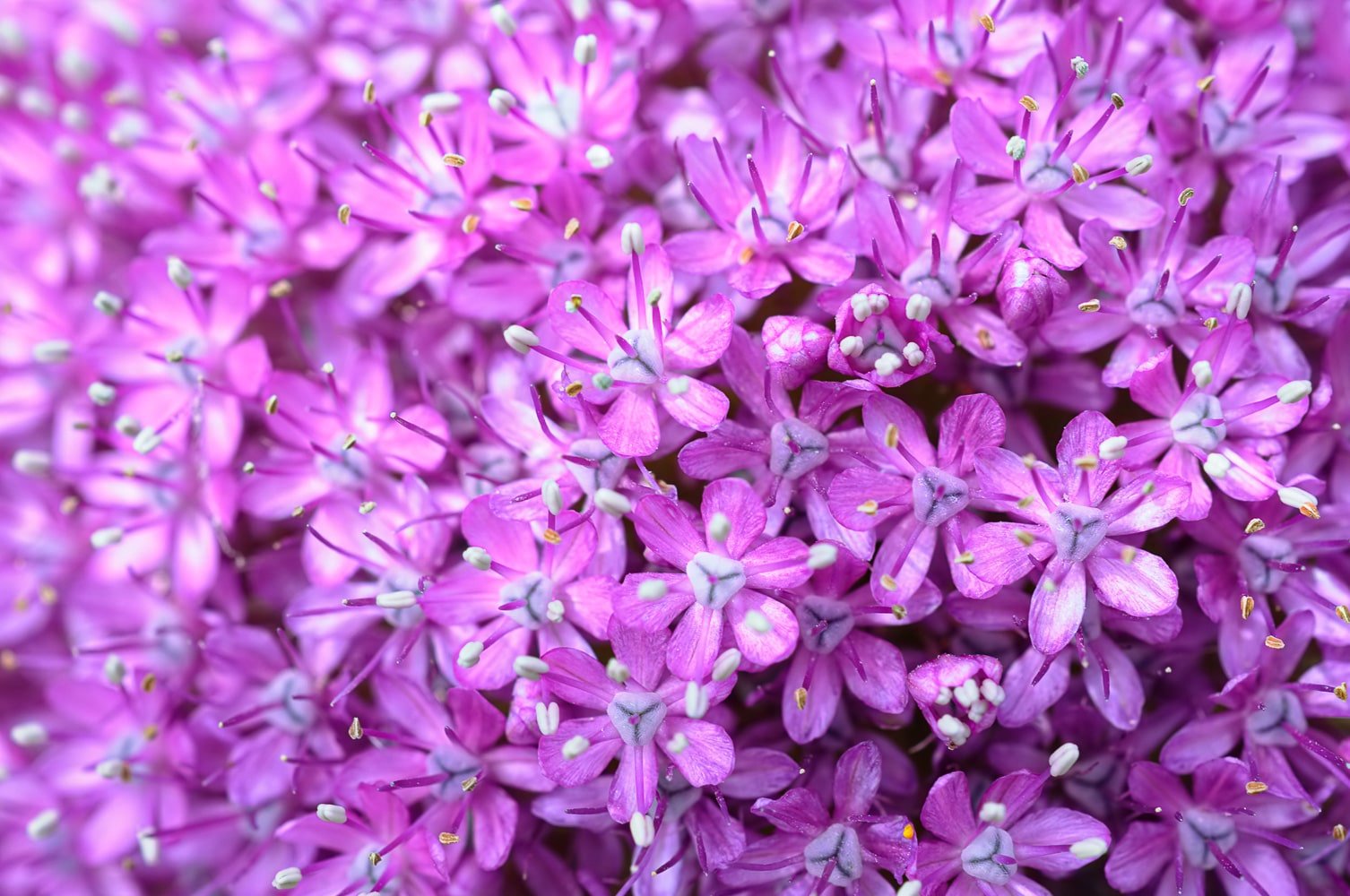
Globemaster is a striking Allium with massive, 8-10 inch-wide violet-purple flower heads on tall, sturdy stems.
Bloom Time: May to June
Persian Onion Allium (Allium aflatunense)
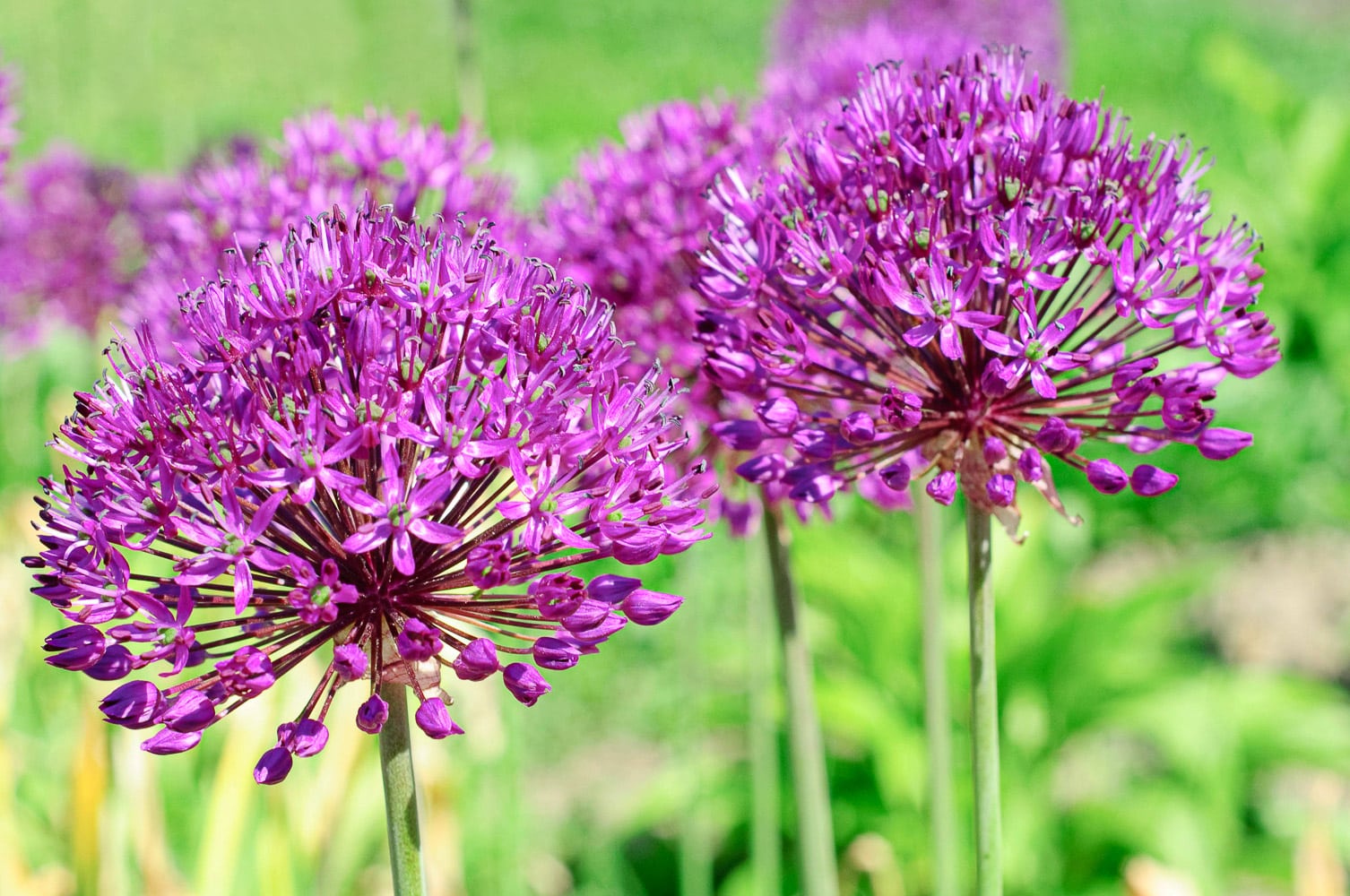
Persian Onion Allium produces round clusters of bright purple to lilac flowers on tall stems. They are great for naturalizing and have a mild onion scent when crushed.
Bloom Time: Late spring to early summer (May to June).
Star of Persia Allium (Allium christophii)

Star of Persia Allium features silvery-lilac star-shaped blooms with a metallic sheen. They have a unique appearance and add an otherworldly quality to the garden. Bloom Time: Late spring to early summer (May to June)
White Allium (Allium ‘Mount Everest’)

‘Mount Everest’ is a pure white Allium with smaller flower heads. The flowers resemble snowballs and add a charming elegance to garden beds.
Bloom Time: Late spring to early summer (May to June).
Chives (Allium schoenoprasum)

Chives are the smallest ornamental alliums. They produce small, edible, lavender-pink flower heads and are often used in culinary gardens.
Bloom Time: Late spring to early summer (May to June).
Drumstick Allium (Allium sphaerocephalon)

Drumstick Allium bears small, burgundy-red flower heads resembling drumsticks atop slender stems. They add a unique and playful element to gardens.
Bloom Time: June to July
Remember that bloom times can vary based on local climate and growing conditions. When planting ornamental alliums, consider their height, color, and bloom time to create a visually appealing garden or landscape design.
Embrace the Elegance of ornamental alliums.
Allium bulbs are indeed a sight to behold in any garden. Their elegant blooms, ranging from vibrant purples to soft whites, add a touch of sophistication and charm to your outdoor space. But their beauty is not the only reason to plant these stunning flowers. By choosing allium bulbs for your garden, you also benefit from their resilience and low-maintenance nature.
Planting and caring for allium bulbs is a breeze, even for novice gardeners. These hardy plants require minimal effort but reward you with breathtaking results. With just a little soil preparation and regular watering, you can watch these bulbs transform into magnificent floral displays that will leave your neighbors in awe.
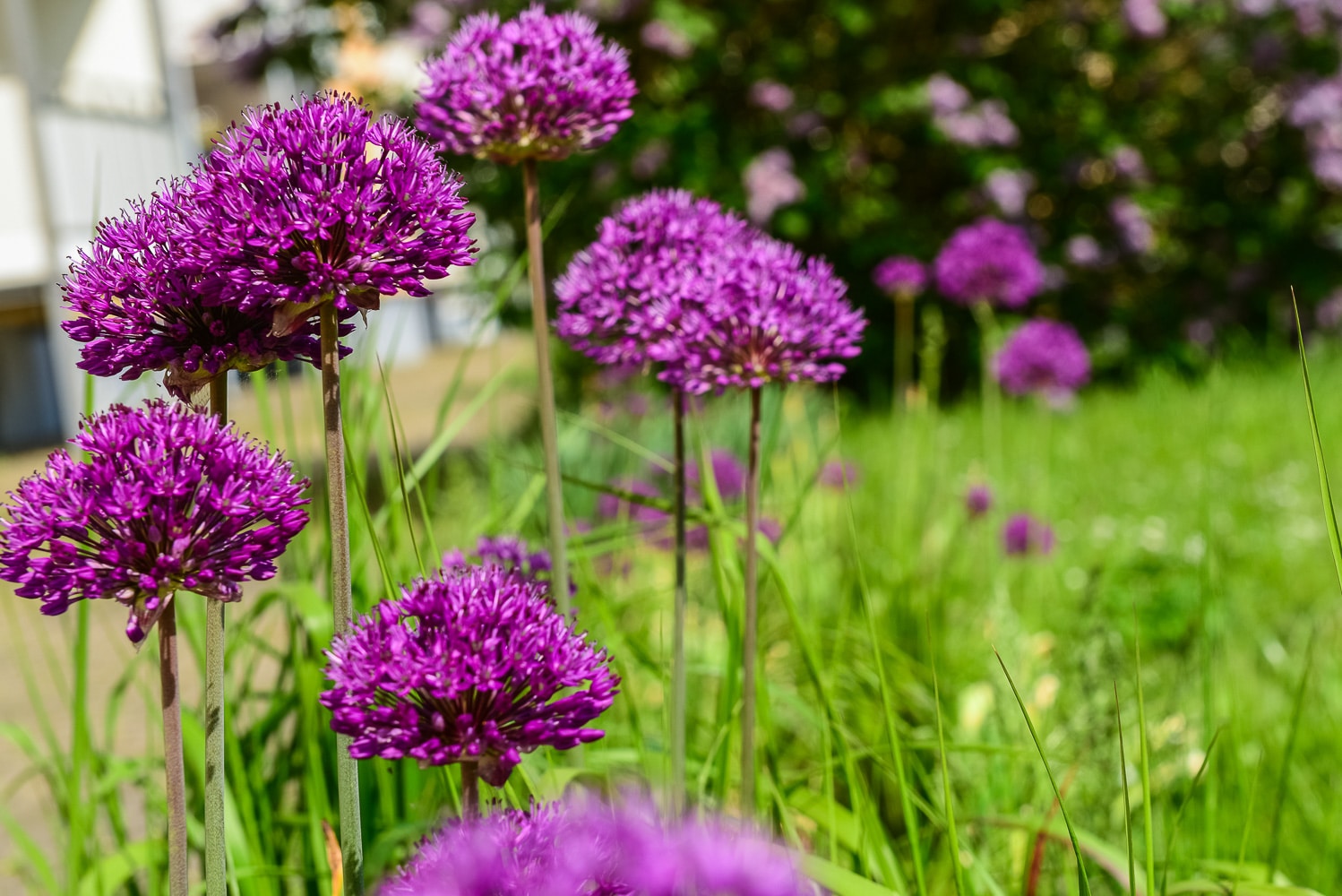
Looking for More Flower Inspiration? We have you Covered!
We have many articles about planting flower bulbs in fall and spring that will help you plan and design your best garden ever. Check out these posts to get you started:

Author: Laura Kennedy
Writer & Owner of Little Yellow Wheelbarrow
Laura is a highly skilled gardener and fervent flower enthusiast. Despite her playful battle with plant spacing guidelines, Laura’s work inspires gardeners to create thriving, beautiful spaces that reflect both creativity and sustainability.

